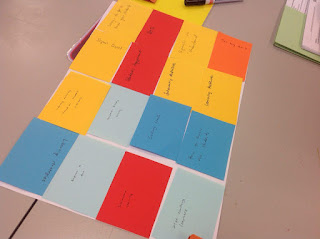Not too long ago, Facebook was just a coding project for Mark Zuckerberg. Today, it is a global business worth billions. I remembered when Facebook started, there were many other social networks such as Friendsters and MySpace who were going after the same opportunity. A few years later, FB has wiped them out.

Here are some lessons we can learn from Facebook and how we can apply them in our classroom:
1 One of the successful selling points of FB is it is very user-friendly. Even an uneducated adult knows how to use FB. The features are easy to use. Keep your lessons user-friendly. Simplify, simplify and simplify. Remember that many in your class might not understand what you are saying and are too shy to ask. Use the traffic lights to get feedback. Do not fall into the 'syok sendiri' syndrome.
2 Allow students time for sharing their status/opinions. Each child has a voice and it is often drowned out by the noise and the teacher. FB gives airtime opportunities for people to air their grouses and share whatever they like, no matter what they look like or sound like.
3 Keep changing things around by bringing a new game, a new idea to your classroom to keep things fresh. Look at what others are doing, network and learn new things so that you will continue to have something new to offer to your students. Do not be afraid to try new ideas. FB does not take its success for granted. It keeps learning, keeps asking for user's opinion and keeps bringing something new every now and then. You are only as good as your last result. You cannot keep basking in your past glory and refuse to change. Look at Nokia.
4 FB also listens to its customers and clients. Each time it rolls out something that customers didn't like, it takes it out. It is important to listen to students. Although they may not be brave enough to tell you that your class sucks, the parking lot is a place for them to put up their grievances too. Roll out an evaluation now and then about your classroom practices. You will learn a lot and be gracious enough to learn from your mistakes.
5 Learn to take criticisms and do not let them get to you. Zuckerberg had to face a lot of attacks and criticisms but he survived every one of them. When you are successful, people will get jealous and they like to pass unkind comments sometimes. You just have to develop a thick skin and move on.
6 Build relationships by celebrating birthdays and events together. Get a monitor to be the reminder for everyone's birthday. Everyone loves to receive greetings and presents. FB recognises this and it has helped many remember their friends' birthday and it has made possible for a person to receive so many greetings in a day.
7 Create a group of friends and mentors to help you learn. Mark Zuckerberg was not as good at management as he was in coding. He surrounded himself with a group of advisors, including Steve Job. He learned as much as he could from each of these men, as well as from many of the executives he recruited to Facebook. Look at the company you keep. If you surround yourself with negative people who are always complaining, then you are going to be like one of them.
8 Focus on a long term vision and do not let the assessment data pull you down. Yes, the data tells you a story and think smart about helping students achieve their learning goals. However, you need to pace yourself to avoid burnout. You are not here to run a sprint but a marathon. So, while helping students prepare for the exam, think about the vision you have for the class and the subject you are teaching. The projects and classroom tasks should point towards achieving this vision. FB's mission is to make the world more open and connected and everything they do points towards this vision.
What is your mission?








































